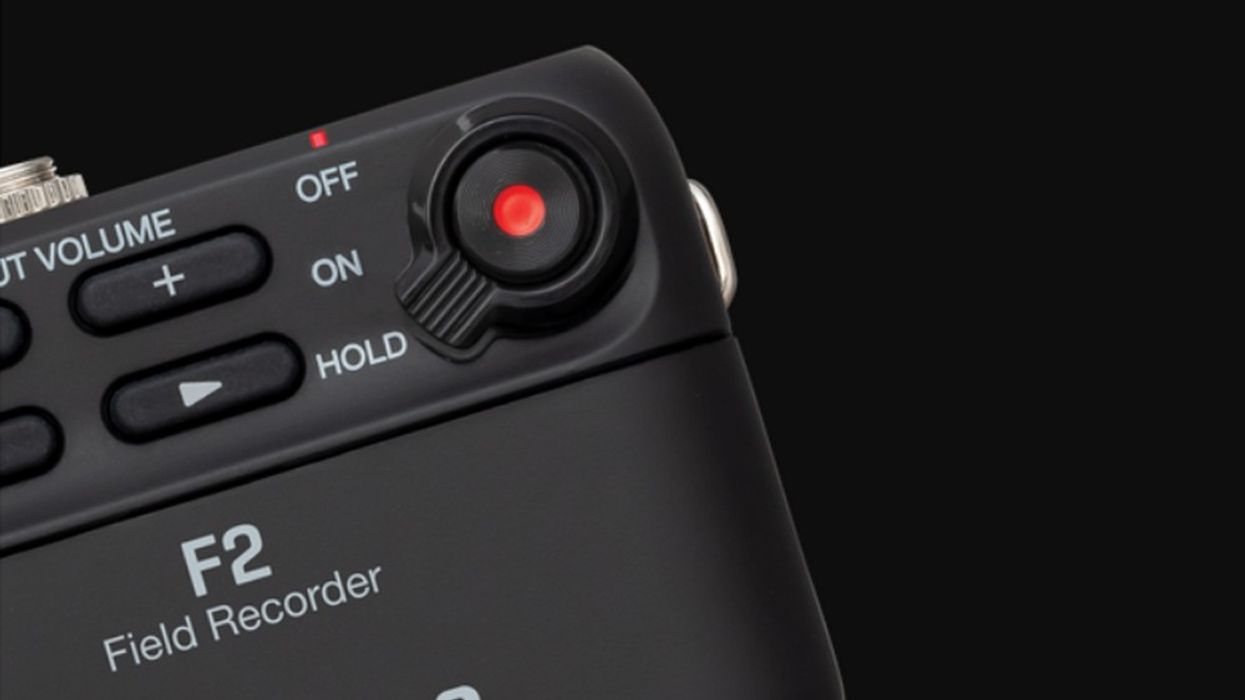The New Zoom F2 is a Pint-Sized All-in-One 32-Bit Float Audio Recorder
The Zoom F2 marks a new frontier in audio capabilities.

It was only a matter of time until one of the major players in audio took the power of 32-bit float recording and shrunk it down in size. Zoom has done just that with the F2, a ridiculously small field recorder that can also be used with a lav, making it one of the most versatile recording devices of such size.
What makes the F2 so unique, especially over the Tascam DR-10L, is that it includes 32-bit float recording, which is freaking amazing when it comes to audio.
We talked about the benefits of 32-bit float recording when we reviewed the Sound Devices MixPre II recorders, and it's a feature found in the affordably priced Zoom F6.
The Zoom F2 takes that dope tech and shrinks it down to a pocketable size. With 32-bit float recording, you don't have to worry about the level being too high or too low when it comes to capturing sound. You can literally set the level to whatever you want (besides 0 db) and you'll be able to recover and normalize the audio with compatible DAWs like Adobe Audition, Audacity, or iZotope.
Thankfully, Zoom is including Steinberg WaveLab Cast software with the F2 which will allow you to edit, mix, and export the audio. You can look at 32-bit float recording as the audio equivalent to uncompressed RAW video. It gives you an extremely large latitude to work with when it comes to audio levels.
Right away, we can see the F2 being perfect for car work, long walk-and-talks that are shot out of the reach of traditional wireless, for plant mics, or even for quick ENG work when you don't have time to run a frequency scan at a location.
The F2 can record 44.1kHz/32-bit float or 48kHz/32-bit float audio files. For inputs, it has a single locking 3.5mm mic/line input with plug-in power up to 2.5 V. There's also a 3.5mm headphone/line output that has a dedicated volume control knob. On the front, there are dedicated buttons for power, record, and to lock the settings. You can also playback audio recordings on the device which is a nice touch for something of this size. The bodypack style recorder also has a quick clip on the rear for easy attachment.

Additionally, Zoom has added an 80 Hz low cut filter, an internal clock (±0.5ppm) for timecode, and a USB-C connection to sync with its F2 Editor that's free to download for Mac or PC. The F2 Editor isn't a DAW, but it lets you adjust settings, format SD cards, and transfer files, among other things.
Upon reading the F2 Editor's manual, it looks like Zoom may have plans for an all-white version of the portable recorder in the future.
For power, the F2 runs on 2 standard AAA batteries, and Zoom says you can get around 14 hours of run time with two alkaline batteries, which is pretty fantastic.

With the release, Zoom has announced two versions of the product. The F2 is $149 and the F2-BT is $199.
The latter has built-in Bluetooth that allows the F2-BT to be controlled by a remote smartphone app. It also has wireless timecode synchronization built in, where the F2 version does not.
While it's reasonable for Zoom to offer two versions, the difference in price is only $50. What would have been better is if Zoom split the cost difference and only offered the F2-BT at $179. This way, you're not contemplating whether or not you "need" wireless timecode sync or wireless control. You just have it and you're happy you have it when it's needed.
That said, since the cost difference is low, the F2-BT is the better option. Plus, it's still $150 cheaper than the Tentacle Sync Track E Pocket Recorder which offers 32-bit float recording and timecode for $349.
Both the F2 and F2-BT are available for pre-order, and both flavors come with an LMF-2 lav mic, windscreens, batteries, a mic clip, and access to the WaveLab Cast software.












